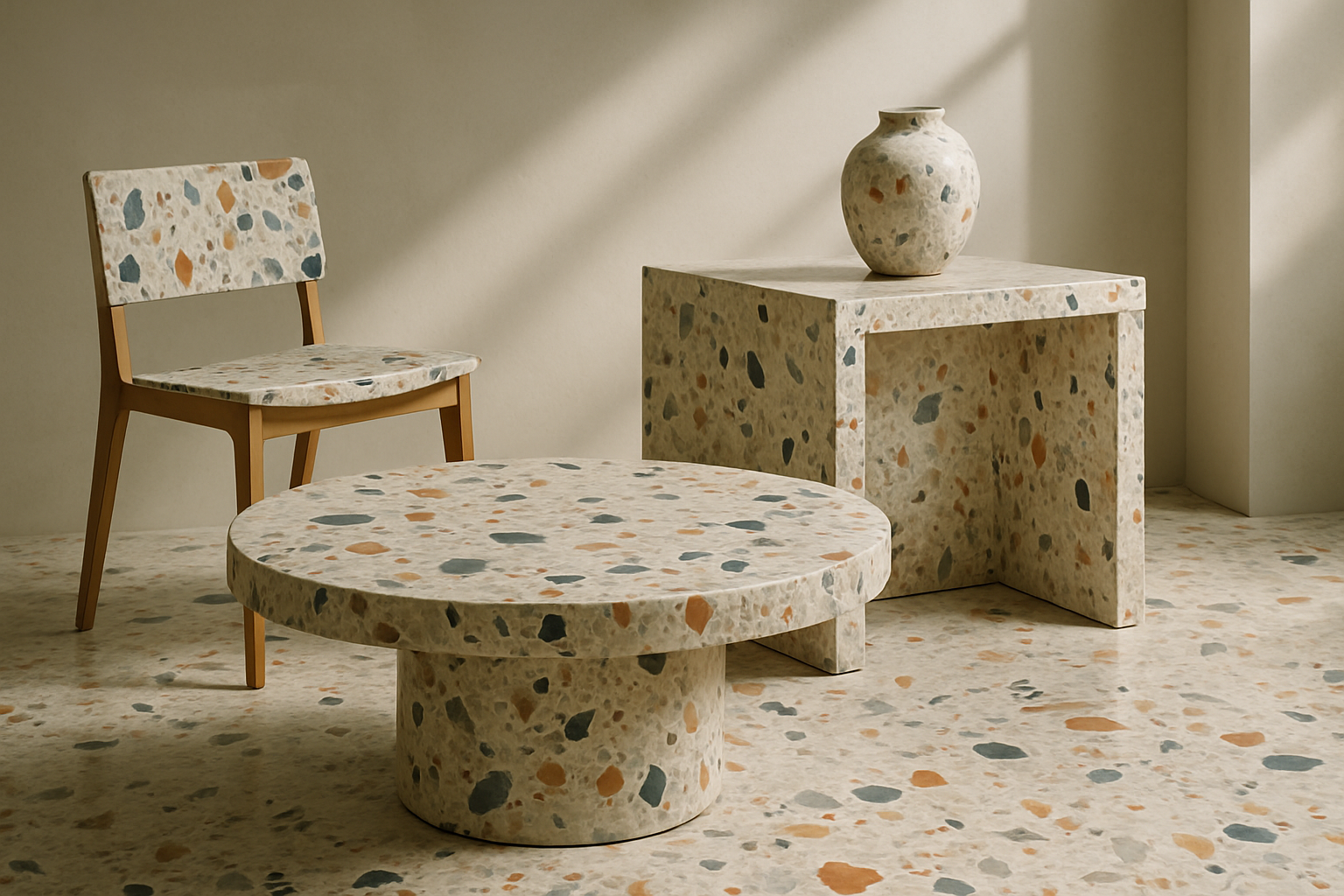Choosing and Caring for Large Round Dining Tables: Size, Style, and Practical Tips
Large round dining tables create inviting spaces that encourage conversation and connection among family and guests. Their circular design eliminates corner seats, ensuring everyone feels equally included during meals. Understanding how to select the right size, material, and style while maintaining your table properly ensures it remains a functional and beautiful centerpiece in your home for years to come.

Large round dining tables offer a unique combination of elegance and practicality that rectangular or square tables cannot match. The absence of sharp corners creates a more intimate dining experience, allowing diners to see and interact with everyone at the table. Whether you are furnishing a new home or upgrading your current space, understanding the key factors in selecting and maintaining a large round dining table will help you make an informed decision that suits your lifestyle and aesthetic preferences.
Sizing and Seating Capacity: Measure for Comfort
Determining the appropriate size for your large round dining table begins with understanding your space and seating needs. A table with a diameter of 60 inches comfortably seats six to eight people, while a 72-inch table accommodates eight to ten guests. For larger gatherings, tables measuring 84 inches or more can seat twelve or more individuals. Before purchasing, measure your dining area carefully, allowing at least 36 to 48 inches of clearance around the table perimeter for chairs and movement. This ensures guests can sit comfortably and servers can navigate the space without difficulty. Consider how often you entertain and whether you need flexibility for expansion. Some round tables feature leaves or extensions that transform them from everyday family tables into larger surfaces for special occasions.
Materials and Finishes: Durability and Aesthetics
The material you choose significantly impacts both the appearance and longevity of your dining table. Solid wood options like oak, walnut, and maple offer timeless beauty and exceptional durability, developing rich patinas over time. Engineered wood with veneer finishes provides similar aesthetics at lower price points while maintaining stability. Glass-topped tables with wood or metal bases create modern, airy looks and make smaller spaces feel more open, though they require frequent cleaning to maintain their clarity. Metal tables, particularly those with powder-coated finishes, deliver industrial or contemporary aesthetics with minimal maintenance requirements. Stone surfaces like marble or granite add luxury and weight, creating statement pieces that resist heat and scratches but may require periodic sealing. Consider your household’s lifestyle when selecting materials—families with young children might prioritize scratch-resistant surfaces, while those seeking heirloom pieces may invest in solid hardwoods.
Style and Design Considerations: Matching Your Space
Your dining table should harmonize with your existing decor while reflecting your personal taste. Traditional styles feature ornate pedestal bases, turned legs, and rich wood tones that complement classic interiors. Contemporary designs emphasize clean lines, minimalist bases, and neutral finishes that blend seamlessly with modern aesthetics. Transitional tables bridge these worlds, combining traditional materials with simplified forms suitable for various decorating schemes. The base design affects both visual appeal and practical function—pedestal bases maximize legroom and seating flexibility, while four-legged designs offer traditional stability. Consider the visual weight of your table in relation to other furnishings. A heavy, dark table may overwhelm a small room with light-colored walls, while a delicate glass table might appear lost in a spacious area with substantial furniture pieces. Balance proportions carefully to create cohesive, inviting dining environments.
Room Layout and Placement: Flow and Accessibility
Proper placement ensures your large round dining table functions effectively within your home’s traffic patterns. Position the table centrally within the dining area when possible, creating equal access from all sides. In open-plan spaces, use the table to define the dining zone without blocking sightlines to adjacent areas. Ensure adequate distance between the table edge and walls, doorways, or other furniture—a minimum of 36 inches allows comfortable chair movement, while 48 inches provides easier passage for multiple people. Consider lighting placement above the table; a chandelier or pendant should hang approximately 30 to 36 inches above the table surface, centered over the middle. In rooms with windows, position the table to take advantage of natural light without creating glare during meals. If your dining area serves multiple purposes, ensure the table placement allows for flexible use of the space.
Maintenance, Care, and Longevity: Cleaning and Protection
Proper maintenance extends the life and beauty of your large round dining table significantly. For wood tables, dust regularly with soft, lint-free cloths and clean spills immediately to prevent staining or water damage. Use coasters, placemats, and trivets to protect surfaces from heat, moisture, and scratches during daily use. Apply furniture polish or wax according to manufacturer recommendations, typically every few months, to nourish the wood and maintain its luster. Glass tables require frequent cleaning with glass cleaner and microfiber cloths to remove fingerprints and smudges. Stone surfaces benefit from pH-neutral cleaners and periodic sealing to prevent staining from acidic foods and beverages. Avoid harsh chemicals, abrasive cleaners, or scouring pads that can damage finishes. For tables with leaves or extensions, store removed sections in climate-controlled areas to prevent warping. Tighten loose hardware periodically and address minor scratches or dings promptly to prevent further damage. With consistent care, your large round dining table will remain a cherished gathering place for decades.
Selecting and maintaining a large round dining table involves balancing practical considerations with aesthetic preferences. By carefully evaluating size requirements, material options, style compatibility, placement logistics, and maintenance needs, you can choose a table that enhances your dining experience and complements your home beautifully. Regular care and thoughtful use ensure your investment remains functional and attractive, creating countless memories around a table designed for connection and conversation.




